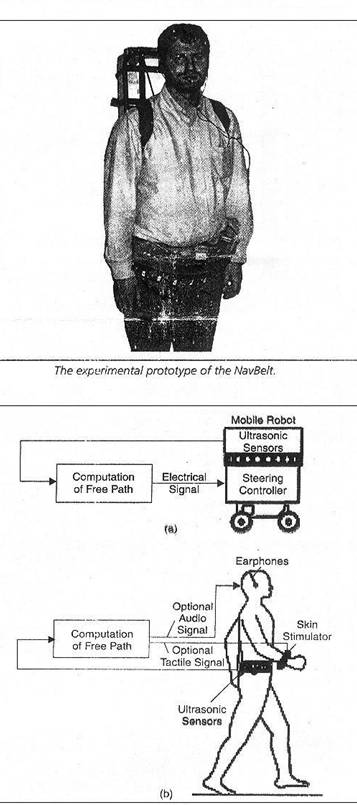





Published on Feb 14, 2025
Recent revolutionary achievements in robotics and bioengineering have given scientists and engineers great opportunities and challenges to serve humanity. This seminar is about "NAVBELT AND GUIDECANE", which are two computerised devices based on advanced mobile robotic navigation for obstacle avoidance useful for visually impaired people. This is "Bioengineering for people with disabilities".
NavBelt is worn by the user like a belt and is equipped with an array of ultrasonic sensors. It provides acoustic signals via a set of stereo earphones that guide the user around obstacles or displace a virtual acoustic panoramic image of the traveller's surroundings. One limitation of the NavBelt is that it is exceedingly difficult for the user to comprehend the guidance signals in time, to allow fast work.
A newer device, called GuideCane, effectively overcomes this problem. The GuideCane uses the same mobile robotics technology as the NavBelt but is a wheeled device pushed ahead of the user via an attached cane. When the Guide Cane detects an obstacle, it steers around it. The user immediately feels this steering action and can follow the Guide Cane's new path easily without any conscious effort. The mechanical, electrical and software components, user-machine interface and the prototypes of the two devices are described.
The NavBelt consists of a belt, a portable computer, and an array of ultrasonic sensors mounted on the front of the belt. Eight ultrasonic sensors, each covering a sector of 15˚ are mounted on the front pack, providing a total scan range of 120˚.The computer processes the signals that arrive from the sensors and applies the robotic obstacle-avoidance algorithms. The acoustic signals are relayed to the user by stereophonic headphones. Figure (2), shows the experimental prototype of the device and pictorial representation of it’s concept.

FIGURE 2
A binaural feedback system based on internal time difference (i.e. the phase difference between the left and right ears) and amplitude difference (i.e. the difference in amplitude between the two ears) creates a virtual direction (i.e. an impression of directionality of virtual sound sources). The binaural feedback system is used differently in each of the three operational modes.
The NavBelt is designed for three basic operational modes, each offering a different type of assistance to the user.
In the guidance mode, the NavBelt only provides the user with the recommended travel speed and direction, generated by the VFH obstacle-avoidance algorithm. In this mode, the system attempts to bring the user to a specified absolute target location. The VFH (Vector Field Histogram) method calculates its recommendation for the momentary travel direction from the polar histogram by searching for sectors with a low obstacle density value. Next, the VFH algorithm searches for the candidate sector that is nearest to the direction of the target and recommends it to the user.
The recommended travel speed is determined by the VFH method according to the proximity of the user to the nearest object. The recommended travel speed and direction are relayed to the user by a single stereophonic signal. An important parameter involved in the guidance mode is the rate at which signals are transmitted. When the user is travelling in an unfamiliar environment cluttered with a large number of obstacles, the transmission rate increases and may reach up to 10 signals per second. On the other hand, when travelling in an environment with little or no obstacles, the transmission rate is one signal every three second.
In this mode, the traveller uses a joystick or other suitable input devices to define a temporary target direction as follows – when the joystick is in its neutral position, the system selects a default direction straight ahead of the user no matter which may the user is facing. If the user wishes to turn sideways, he/she deflects the joystick in the desired direction, and a momentary target is selected 5-mt. diagonally ahead of the user in that direction. In case an obstacle is detected, the NavBelt provides the user with relevant information to avoid the obstacle with minimal deviation from the target direction. The recommended travel speed and direction are conveyed to the user through a single stereophonic signal, similar to the method used in the guidance mode. This mode gives the user more control over the global aspects of the navigation task.
This mode presents the user with a panoramic virtual acoustic image of the environment. A virtual acoustic image is a stereophonic sound that appears to travel through the user’s head from the right to the left ear. A virtual beam travels from the right side of the user to the left through the sectors covered by the NavBelt’s sonar’s (a range of 120˚ and 3-mt radius). The binaural feedback system invokes the impression of a virtual sound source moving with the beam from the right to the left ear in what we call a “sweep”. This is done in several discrete steps, corresponding to the discrete virtual direction steps. Figure (3) shows the graphical representation of the image mode
| Are you interested in this topic.Then mail to us immediately to get the full report.
email :- contactv2@gmail.com |